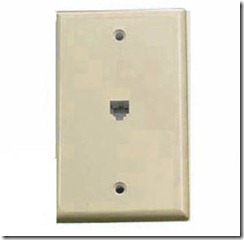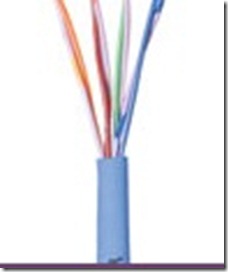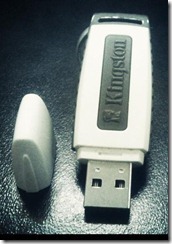
!!!!!
What are Ethernet cables, what are the differences between them, and *why you should care*, especially if you’re a homeowner or going to be a homeowner. What we classically consider “Ethernet” cables are actually part of a family of cables, each with different properties, and stratified into categories. I like to think of these as Data cables, to give a bit of separation vs. power cables.. Depending on how old your home/apartment/condo is, you probably already have Data cables running throughout your apartment.
Most older homes are wired for land-line telephones. You’ve probably got wall jacks all over the place for telephones, one or two per room.

Something like these
Traditionally, these are wired with Category 3 cable. Lets set aside what exactly Cat3 cable *is* for a moment to make clear my point. All modern houses were wired when they were built/renovated to carry, at the time, the primary data cable for the common man. Telephones! But, today, we have much more strict data needs, and if you have the opportunity to change out the telephone cables in your walls with better cables (which, by the way, you can still wire as telephone jacks if you really want), you should. It’s easily one of the cheapest ways (if you have the walls open, or the builders were smart and ran the cable via conduit) to up the resale value of your property.
Okay, enough rambling, *what are* these cables, and why should I care?

Sorry for the blurry picture, I couldn’t find a better one and don’t actually keep Cat3 cable in my apartment. This is Category 3 cable. It’s 4 pairs of wires that are loosely twisted. The wire itself isn’t “shielded” (which means it can pick up interference from any random source). This is your telephone data cable :-)
Traditionally these cables are terminated (the ends of the cable are fit into) RJ11 connectors.

These connectors support a maximum of 3 twisted pair (or six individual wires). But, wait, the cable has 4 twisted pair? In telephony (I don’t care if this is a real word ;-) each twisted pair would be a separate voice line. This would allow one telephone to support three separate telephone lines. But this category of cable isn’t shielded, and the twisting is not very tight, so you end up getting “cross-talk”.
What is Cross Talk? In a nutshell, each cable has a certain amount of electricity (Direct Current commonly) flowing in it. Which cable carries which direction of DC power isn’t important, but what is important is that when you have DC wire sending power one direction, and you place *another* copper wire next to it flowing power in the same direction, they will both contaminate each other..the data will “jump” from one cable to another. Ever heard someone faintly on the phone with you while you’re talking to someone else?
The higher the power flowing through the cable, the more noise or cross talk is generated. The faster you vary the data flow (by alternating the dv voltage), the more cross talk you get. Cat3 cable is poorly suited for high-speed data transfer, but you can make a poor-man’s Ethernet cable out of it. It won’t support fast speeds, but you can terminate a cat3 cable and make a 10Base-T connection. (We’ll cover what 10Base-T is later).

You’d terminate with an RJ45 connector, vs. the Telephone’s RJ11 connector.

Category 5 cable is the current standard in Ethernet wiring. All Cables from here out terminate with RJ45 connectors, instead of Rj11. As you can see, there’s not much *physical* difference between it, and the Cat 3 cable. The primary difference is in the twist rate of the wire pairs. Compare the above photo with the Cat3 cable. This extra twist eliminates most of the cross-talk, and allows for 100Base-T communications.
Okay, that’s the second time I’ve used this weird notation of XBase-T, so here’s the long and short of it:
10Base-T means that between two computers, or a computer and a switch or router (don’t know the difference? I’ll be doing a blog on these wonderful things later), a maximum connection of 10 Megabits per second can be maintained. 10Base-T actually is an abbreviation for: 10 Megabits per second, Baseband, Twisted pair. Engineers love boring, but descriptive names. 10Base-T is the slowest “normal” Ethernet connection between two computers. By todays standards, it’s woefully inadequate. As a small aside, my current *internet* connection is 15Megabits per second down..so if my network was 10Base-T, I couldn’t utilize a full 1/3 of my internet connection!
The higher the data rate, the better, as we can move more data!
100Base-T follows the same pattern as above, but supports 100 Megabits per second, or 10 times the data rate.
1000Base-T, also called Gigabit Ethernet, supports 10 times the data rate as 100Base-T.
10GBase-T, also called 10 Gigabit Ethernet, supports 10 times the data rate as 1000Base-T.
So, to recap, Cat 3 cable can support telephones, and 10Base-T. Cat 5 can support 100Base-T, the minimum networking level you should have for a wired network.
There is an “upgrade” to Cat5, called Cat5e. It’s the same cable as pictured above, but manufactured to tighter tolerances, and it allows 1000Base-T. As a side-note: You *can* get Cat5 to do 1000Base-T. I’ve done it, it works, but you will have some Cat5 cable that’s too loose in it’s tolerances and won’t do it. Given that Cat5 and Cat5e cost the same (or cat5e is cheaper), just buy Cat5e if you’re thinking Cat5.

Continuing the trend, the only real difference between Cat5e and Cat 6 is the twist rate. There’s a couple other differences that you can’t physically see, such as the copper inside the wire being held to a stricter quality control, but this cable is the one you should be wiring your house with. It supports 1000Base-T, and costs only slightly more than Cat5e. It can, technically, support 10GBase-T, for short distances. There’s an upgraded Cat6, called Cat6a, that’s expensive, but it will support 10GBase-T for longer distances. But here’s where we hit the wall as far as how much cross talk we can eliminate with just twisting the pairs of wire. Lets go to Cat7.

This is the first cable that is structurally different than the previous cable. Cat7 is not only shielded (that silvery mesh), but the individual twisted pairs are shielded inside the larger shield. You’ll also notice that the twisted pairs have a looser twist rate than cat6, as the cross talk is handled with shielding instead of twist rate. *IF YOU CAN AFFORD IT*, this is the cable to wire your home with. Whereas Cat 5e cable and Cat 6 basically cost the same, Cat7 is almost 3 times, or more, than Cat6.
Here’s a quick recap:
Cat3 is what most homes were wired with. If you have the opportunity, rip it from the walls and burn it like the plague spawn it is. It supports 10 Megabits per second.
Cat5 was cool, but don’t buy it. It’s been supplanted by better cable. It supports 100 Megabits per second, and depending on the phase of the moon, Gigabit per second.
Cat5e is cheap, but don’t buy it. The days of Cat6 are here. It supports Gigabit per second.
Cat6 is what you should wire your home with and be happy. It’s cheap, and is easy to use. It supports Gigabit per second.
Cat6a is what you could wire your home with. It’s more expensive, but supports 10 Gigabit per second. But, as long as you’re willing to pay double Cat6 prices…why not go one step further and get Cat7. Almost all consumer routers and computers *do not* support 10GBase-T. This would be future proofing.
Cat7 is what you could wire your home with if you have lots of money. It’s the future. It’s fancy-pants. Almost all consumer routers and computers *do not* support 10GBase-T. This would be future proofing.

A last word on Cabling your home: Don’t use regular staples, and don’t let whoever installs the cable use regular staples. They can “punch” through the cable, ruining it, or will shred the cable over time as the cable flexes due to temperature. There are proper plastic mounts with zip-ties at Home Depot, make sure your electrician or whoever is installing is using them. Cable shielding and sharp metal are *not* friends. Always use plastic grommets when you drill through wood. Don’t bend the cable more than 90 degrees. Don’t Exceed the minimum bend radius of 1-inch. Don’t use force and Yank on a cable. Don’t run the cable over with hand trucks or step on them if you help it. Knowledge is Power. Power Corrupts Absolutely. Be Evil, Learn all you can..






















